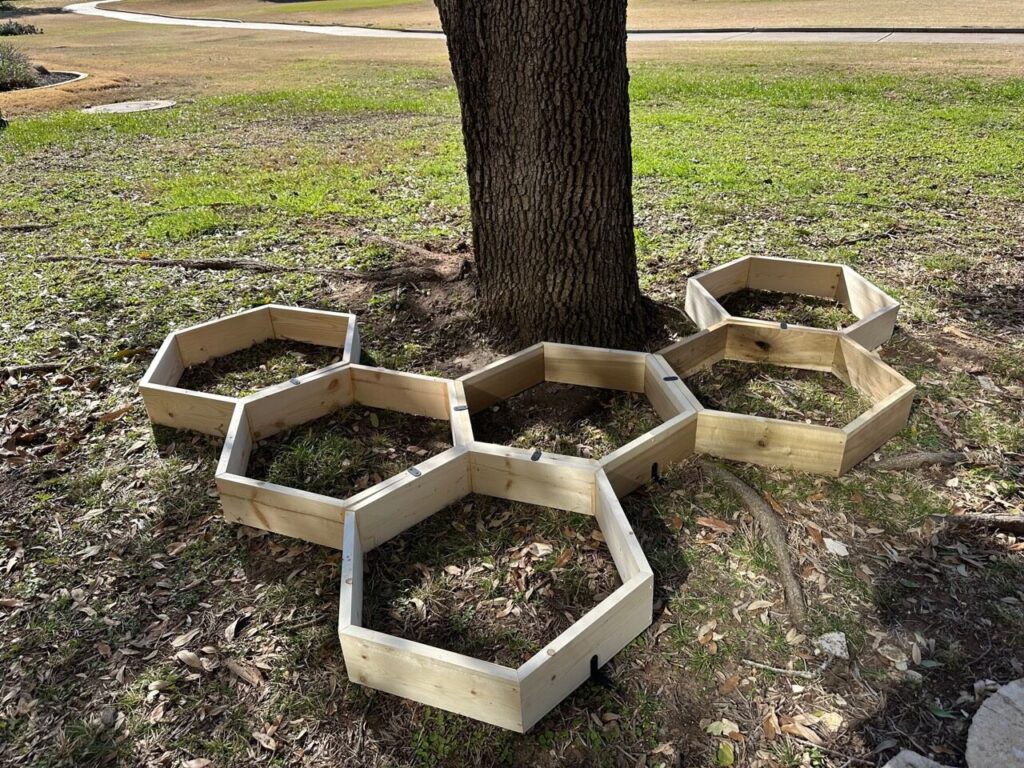As autumn leaves fall and cover the ground, many of us feel compelled to rake, bag, and dispose of this colorful carpet as quickly as possible. But beneath the surface, these fallen leaves serve important purposes for both landscapes and wildlife. Leaf litter, the layer of fallen leaves on the ground, offers crucial habitat for beneficial insects, feeds soil microbes, and helps improve soil quality around trees and shrubs. In this blog post, we’ll look at why leaving some leaf litter on the ground can benefit your landscape and how to do so in a way that keeps both your garden and lawn healthy.
The Many Benefits of Leaf Litter for Your Landscape and Local Wildlife
- Habitat for Beneficial Insects
Leaf litter provides a sheltered, nutrient-rich habitat for many beneficial insects that play a vital role in garden health. Ground beetles, spiders, and ladybugs find protection within the leaf layer, especially during colder months. These insects, in turn, help naturally manage pest populations, reducing the need for chemical insecticides and enhancing your garden’s resilience. By leaving some leaf litter on your property, you’re creating a safe overwintering spot for these beneficial insects, which will return in warmer months to help maintain a healthy ecosystem in your garden. - A Home for Fireflies
Many people enjoy the magical glow of fireflies lighting up summer evenings, but few realize that fireflies spend the winter burrowed in leaf litter. This protective layer provides the conditions they need to survive until spring and early summer, when they emerge to begin their display. By allowing leaves to remain undisturbed in certain areas of your yard, you’ll be supporting firefly populations—and may even be rewarded with an impressive display of these bioluminescent insects come summer. - Nourishment for Soil Microbes
As leaves decompose, they contribute organic matter to the soil, providing nourishment for beneficial soil microbes. These microbes break down organic material and cycle nutrients through the soil, enhancing soil fertility over time. This process of decomposition also aerates the soil, helping to keep it porous and healthy, and it creates an ideal environment for roots to thrive. Trees, shrubs, and perennials benefit from the richer soil that leaf litter helps create, making it an easy, natural way to improve the health of your landscape. - Soil Quality Enhancement for Trees and Shrubs
In addition to feeding soil microbes, decomposing leaf litter contributes to soil structure and moisture retention, which is particularly beneficial for trees and shrubs. The organic matter from the leaves acts like a natural mulch, suppressing weed growth and insulating the soil. This keeps it warmer during winter months and prevents erosion from heavy rains. For trees and shrubs, the added nutrients and improved soil conditions create a healthier environment, promoting root growth and resilience against droughts or other environmental stressors.


Challenges of Leaf Litter for Lawns
While leaf litter has many benefits, allowing it to blanket your lawn fully may create issues for turfgrass. Thick layers of leaves can smother grass, blocking out sunlight and preventing air circulation, which the grass needs to stay healthy. This buildup can also encourage fungal growth and diseases, leading to brown patches and weakening the lawn’s root structure. For those who prioritize a lush, green lawn, it’s generally better to remove the bulk of leaves from grassy areas.
A Balanced Approach: Designated Leaf Areas
One effective solution is to set aside specific areas for leaf litter to accumulate, creating dedicated zones for the benefits it provides without impacting your grass. For instance, garden beds, areas under trees, or less-trafficked parts of your yard make excellent spaces to allow leaves to naturally decompose. Some homeowners have even created “honeycomb” leaf traps, which are wooden structures that keep leaves contained in an organized pattern on the ground. These can add a unique visual element to your landscape while keeping leaf litter in designated areas. This approach allows you to strike a balance, keeping your lawn healthy while still supporting beneficial insects, soil quality, and other ecological advantages.

Conclusion
This fall, as you consider how to approach leaf cleanup, keep in mind the many benefits of leaving some leaf litter behind. Allowing certain areas of your yard to retain their fallen leaves creates a valuable habitat for wildlife, nourishes the soil, and ultimately enhances the health of your landscape. If you’d like guidance on how to best incorporate leaf litter into your yard care or have other questions about seasonal landscape maintenance, contact Homer Tree Care. Our expert arborists can help you achieve a balanced approach that works for both your garden’s health and your lawn’s appearance, so you can enjoy a vibrant, thriving landscape year-round.

